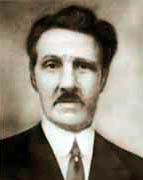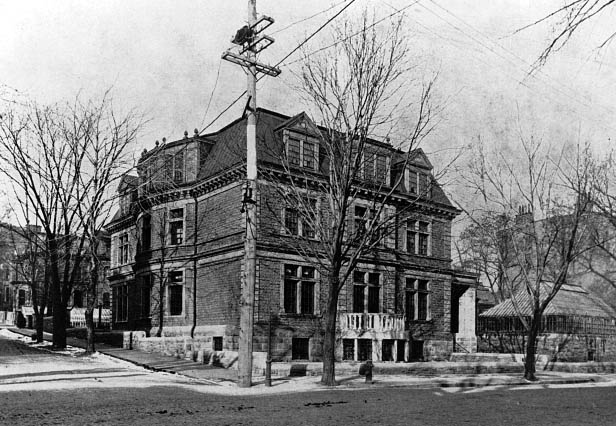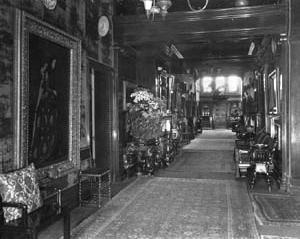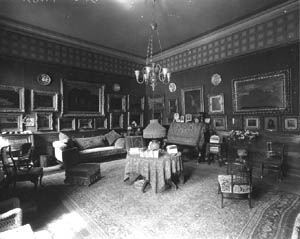Edward Colonna 1862-1948
| |

Edward Colonna -
1923.
|
Colonna, a pseudonym for Klonne, was born 11 May 1862 near Cologne, Germany, to Karl Edouard
Klonne, his father and his second wife, the former family servant Henriette Quack. Edward was the first of three
children to his father's second family. At the age of 15, he left home to study architecture, reputedly in Brussels,
Belgium.
In the later part of 1882, Colonna left Europe for the United States and settled in New York City. He soon found
employment with Louis C. Tiffany, one of this country's leading decorating consultants. After a few years, he left
Tiffany and took a position with New York architect Bruce Price. It was through Price that Colonna found a new
position as chief designer for the Barney & Smith Manufacturing Co. of Dayton, Ohio. Barney & Smith
specialized in the manufacture of railroad cars and were well-known to William C. Van Horne. At that
time, they were the second largest such company in the nation, and boasted a workforce of 1,500 men. Barney &
Smith had contacted Bruce Price on several previous occasions, not only for interior designs in some of their
railroad coaches, but also as architect for one of their corporate officer's local residence. Perhaps knowing
Colonna through his work with Bruce Price, he was hired and began his new job at Barney & Smith in September
1885.
Colonna left the employment of Barney & Smith at the end of October 1888. He returned to New York city where he
completed papers to become a naturalized citizen of the United States. However, his stay in New York was brief as he
continued on to Montreal where he established his own office. One of his major clients was the Canadian Pacific
Railway. The Canadian Pacific was a big customer for Barney & Smith passenger cars and it is assumed he worked
closely with their management while working for Barney & Smith. He continued to design the interior of Canadian
Pacific's parlor and sleeping cars, some of which were still being built by Barney & Smith. However, Colonna's
main emphasis returned to architectural design, his early training. He was commissioned to design many of Canadian
Pacific's western sector railroad stations, including Calgary's 1893 sandstone station, and also obtained
remodeling projects and commissions from CPR's management. These inlcuded the Vancouver station and general office,
Vancouver Hotel alterations and additions, the Regina station, the Portage la Prairie station, and the interior
design of Van Horne's sumptuous Sherbrooke Street house in Montreal.

Van Horne's Sherbrooke Street residence in Montreal, Quebec - McCord
Museum.
 
Interior views of Van Horne's Sherbrooke Street residence - McCord
Museum.
The railroad expansion era was starting to fade by the late 1890s and Colonna's commission work with the Canadian
Pacific was essentially at an end by late 1897.
One of his earlier commissions with the Canadian Pacific was for the interior design of staterooms on a passenger
steamship being built in Scotland. It was necessary for Colonna to spend considerable time in Scotland supervising
this work. However, he apparently established a residence in Paris, France, during this same period where he worked
from 1898 until 1903 for Samuel Bing's gallery in Paris, L'Art Nouveau. Colonna is best known as a pioneer of the
Art Nouveau movement.
In 1923 at the age of 61, Colonna retired to Nice in southern France. His health was beginning to fail as paralysis
was starting to affect his legs. His health continued to deteriorate and by 1928 his legs were completely paralyzed
and he was confined to bed. As an invalid, he now fell back on his talent as a designer in attempting to provide a
continuing income for himself. He resorted to drawing monograms and carving alabaster bowls, vases, and
candlesticks. He attempted to exhibit and sell these items through some of his old business acquaintances.
Recognition continued to elude him and on 14 Oct 1948, he died at the age of 86, and was buried in an
unmarked pauper's grave in Nice, France.
Back
|
|